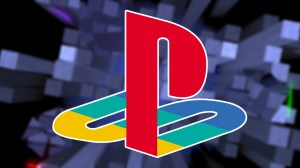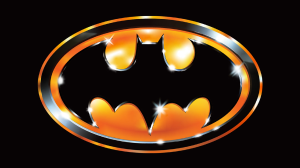2K Games’ WWE 2K20 is just around the corner, and the game will feature a number of firsts for the series, including that it will be the first time Visual Concepts is fully in control of the franchise. That fundamental shift has brought with it a variety of new approaches to both content and mechanics, though there will be some of the typical updates and changes fans have come to know from past editions as well. ComicBook.com had the chance to get hands-on time with 2K’s newest entry in the popular franchise, and there’s quite a bit to dive into, so let’s get to it.
Videos by ComicBook.com
First, it’s important to understand that many of the changes this year are attributed to foundational elements from 2K essentially going in to rebuild the game now that they are the sole developers of the game. That freshening up of the mechanics really shines through when you finally take control of a superstar in the ring, especially if you fired up WWE 2K19 even remotely recently.
The movements and animations are quite a bit smoother this time around, and more importantly, the player feels fully in control of the superstar they are playing as. Sure you’ll still miss your opponent with a mistimed kick or dive, but more often than not when you attempt to toss someone into the ropes, bounce of them, or launch from the top turnbuckle, it happens just like it looked in your head, and that’s a huge improvement from game’s past, where it often felt like a crapshoot to execute anything other than basic maneuvers.

The new control scheme changes things up a bit, assigning the counter button to Y and breaking apart climbing and picking up objects to different buttons, as well as making the trigger required to initiate grapples. For Signatures and Finishers, you now hold two buttons together (the X and A on Xbox One), and moving your opponent around has been completely relegated to the right stick. That’s quite a change from previous games, but it makes a significant difference once you get used to it.
You’ll appreciate the updates the first time you tackle a ladder match, as after an initial learning curve of figuring out what bumper does what you’ll start quickly alternating between them to maneuver not only the ladder but also your opponent. You could move your opponent across the ring in past editions, but 2K took their time to tune the right stick’s control of your opponent, and it shows. It feels like manipulating a marionette at times and is incredibly handy when you have to set up an opponent for a specific action, which might come in a normal match but is even more important and crucial if you want to make your way through 2K Showcase.

Speaking of Showcase, the mode clearly had a passionate team behind it, and it shows. From our time with the mode you can see the attention to detail in the matches themselves as well as the presentation, and any fan of the Four Horsewomen will love reliving some of their favorite moments. Visual Concepts has done a stellar job with the cinematics that activate after you complete specific actions, and they also created a bevy of memorable looks for each superstar that only invests you in these classic matches even more.
2K’s Towers also got an upgrade, and feel more substantial already than they did in last year’s edition, and fans have an especially robust selection to choose from when creating their own superstar.

Still, the biggest changes are in the core mechanics, and it’s something I can’t stress enough. Holding a submission is still challenging but it now doesn’t feel as if it’s actively fighting you. Punches and kicks hold firmer weight now, so when a chop or a punch connects it feels as if you’re actually doing damage.
The ground targeting system has also been streamlined, though we still needed some time with that system to really get a handle on it, as early on it feels as if you are only doing a few of the same moves over and over again. That’s one of the issues with having no indicators on screen, but we imagine this will get better as we get more comfortable with it. That learning curve is also apparent with the overhauled control scheme in general, and it did take a minute to get adjusted, though after some time with it the changes are mostly positive so far.

Now, you can’t have a WWE game without the superstars, and Visual Concepts landed way more likenesses than they missed the mark on. That said, there are some superstars that just look really off, with names like Dusty Rhodes, Edge, Molly Holly, and The Rock coming to mind, though to be fair, Rock looked far better in action than he did in his initial entrance trailer reveal. There are also some shining examples of 2K’s artistic talent present in the roster, including superb recreations of stars like Tommaso Ciampa, Eddie Guerrero, Undertaker, Paige, Kairi Sane, Ember Moon, Samoa Joe, and more. If this is what happens after one year of Visual Concepts taking over, we can’t wait to see what they do in future releases.

All in all, we came away from WWE 2K20 incredibly optimistic. Time will tell if the online portion of the game will hold up once servers are live, which will be incredibly important for it during its initial launch. That said, the moment to moment gameplay feels far more refined, and that should only increase once players get more time with the new control scheme and tweaks to the core mechanics. Visual Concepts is fully in the driver’s seat this time around, and so far it seems as if that was the right move to bring WWE 2K into the modern era.
Are you excited for WWE 2K20? Let us know in the comments or hit me up on Twitter @MattAguilarCB for all things WWE 2K20! You can also find all of our coverage on the game right here!








